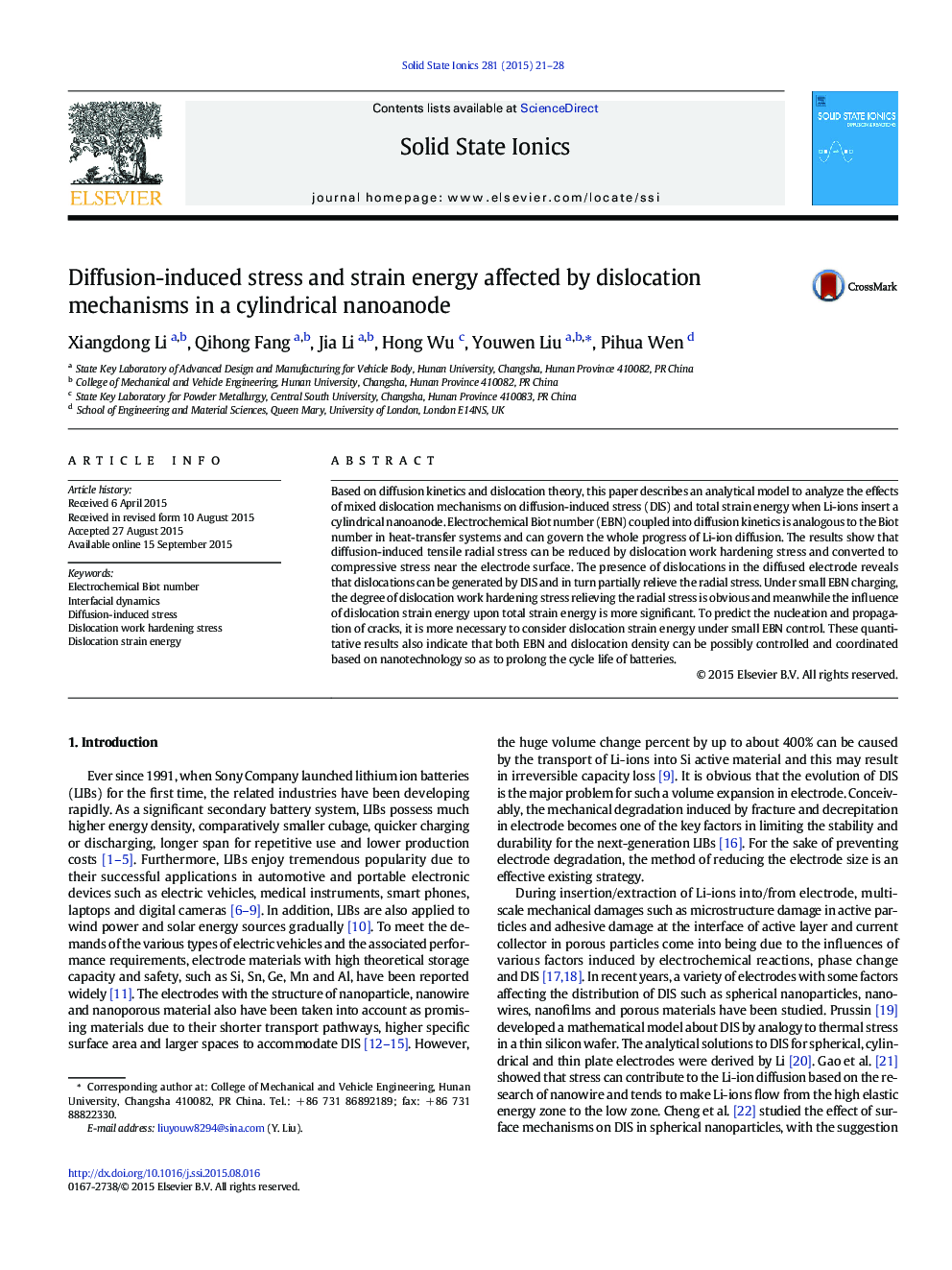| Article ID | Journal | Published Year | Pages | File Type |
|---|---|---|---|---|
| 7745672 | Solid State Ionics | 2015 | 8 Pages |
Abstract
Based on diffusion kinetics and dislocation theory, this paper describes an analytical model to analyze the effects of mixed dislocation mechanisms on diffusion-induced stress (DIS) and total strain energy when Li-ions insert a cylindrical nanoanode. Electrochemical Biot number (EBN) coupled into diffusion kinetics is analogous to the Biot number in heat-transfer systems and can govern the whole progress of Li-ion diffusion. The results show that diffusion-induced tensile radial stress can be reduced by dislocation work hardening stress and converted to compressive stress near the electrode surface. The presence of dislocations in the diffused electrode reveals that dislocations can be generated by DIS and in turn partially relieve the radial stress. Under small EBN charging, the degree of dislocation work hardening stress relieving the radial stress is obvious and meanwhile the influence of dislocation strain energy upon total strain energy is more significant. To predict the nucleation and propagation of cracks, it is more necessary to consider dislocation strain energy under small EBN control. These quantitative results also indicate that both EBN and dislocation density can be possibly controlled and coordinated based on nanotechnology so as to prolong the cycle life of batteries.
Related Topics
Physical Sciences and Engineering
Chemistry
Electrochemistry
Authors
Xiangdong Li, Qihong Fang, Jia Li, Hong Wu, Youwen Liu, Pihua Wen,
